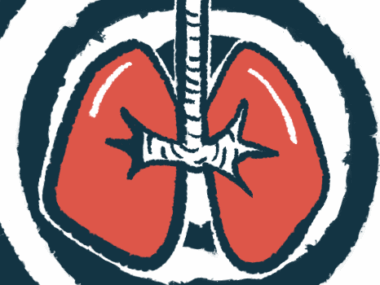Orkambi shows benefits for children with cystic fibrosis
Treatment led to changes in lung function, structure after a year: Study
Written by |

Among children with cystic fibrosis (CF), starting the approved oral therapy Orkambi (ivacaftor/lumacaftor) led to favorable changes in lung function and structure after one year, a real-world study shows.
Improvements were seen in markers of small airway function and structural changes, including the lung clearance index (LCI), indicating “the importance of these parameters to evaluate treatment effects of CF modulators in children,” the researchers wrote. LCI measures how long it takes a person to “clear” an inhaled tracer gas from their lungs, with longer times associated with structural changes in the airways.
The researchers said the study demonstrates “the efficacy of [Orkambi] was comparable to phase 3 studies in children.” The study, “Introduction of Ivacaftor/Lumacaftor in Children With Cystic Fibrosis Homozygous for F508del in the Netherlands: A Nationwide Real-Life Study,” was published by Pediatric Pulmonology.
Orkambi is a CFTR modulator designed to treat CF caused by the F508del mutation in the two copies of the CFTR gene. F508del is the most common disease-causing mutation and compromises the processing and trafficking of CFTR protein to the cell membrane, where it normally regulates the flow of choride ions. Orkambi’s active ingredients, lumacaftor and ivacaftor, target defects in the production and function of CFTR.
In clinical trials, it significantly improved lung function and body mass index (a measure of body fat that takes into account weight and height), and also reduced the number of exacerbations, which are periods of acute symptom worsening, and the use of antibiotics in children and adolescents, ages 6-18.
Orkambi’s real-world effects
However, few studies have assessed Orkambi in a real‐world situation, particularly its effects on small airways and structural lung disease. Here, researchers in the Netherlands conducted a real-world study to assess its effects in children with two F508del mutations.
A total of 223 children with CF who were a median age of 11 and from multiple Dutch CF centers were included. The researchers collected data before and after 12 months of starting Orkambi. The data included lung function and structure, nutritional status, sweat chloride, and CF exacerbations.
Results showed that percent predicted forced expiratory in 1 second (ppFEV1) didn’t significantly change after a year of treatment. The ppFEV1 is a standard lung function measure that quantifies how much air a person can forcefully exhale in one second as a percentage of what’s considered normal for their age, sex, height, and ethnicity.
There was, however, a significant improvement, by a mean of 10% after a year, in LCI, a marker of small airway and structural lung disease, among 28 patients.
According to the researchers, “the absence of a decline in lung function on [Orkambi] can also be interpreted as a positive effect of [Orkambi] given that FEV1 typically decreases in children aged 6‐18 years with CF.” Also, the lack of improvement in this measure “may be explained by FEV1 being insensitive as outcome measure in (early) CF lung disease.”
Moreover, both arterial wall thickening and total airway disease reduced after one year among 81 participants. A bronchus-artery (BA) analysis, also a marker of small airway and structural lung disease, showed further improvements. Bronchi are large tubes that carry air from the windpipe to the lungs.
These results indicate “BA analysis of CT-scans is able to detect subtle changes in structural lung disease [which] will be especially useful in the follow‐up of the youngest children who will become eligible for the start of modulators,” the researchers wrote.
Patients also saw a significant decrease in sweat chloride, by 22.2 mmol/L, and an improvement in body mass index, reflecting better nutritional status. Exacerbations, assessed by the number of courses of antibiotics, decreased with treatment. Sweat chloride assessments are a diagnostic tool in CF and indicate how well the CFTR protein is functioning.
The treatment was generally safe and well tolerated, although three children developed mild lens opacities in the eyes but without visual impairment, “which emphasizes the importance of routine ophthalmologic follow up,” the scientists wrote. One child had to stop taking Orkambi due to elevated liver enzymes.







